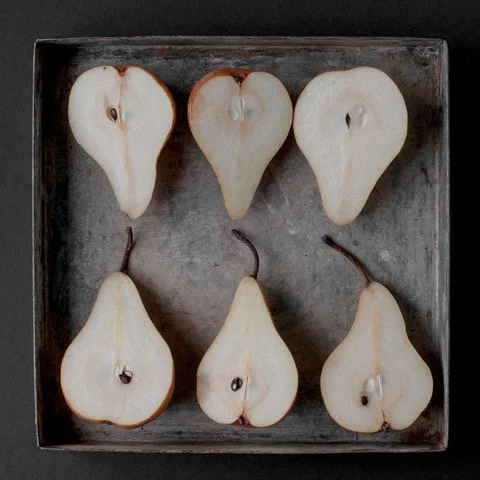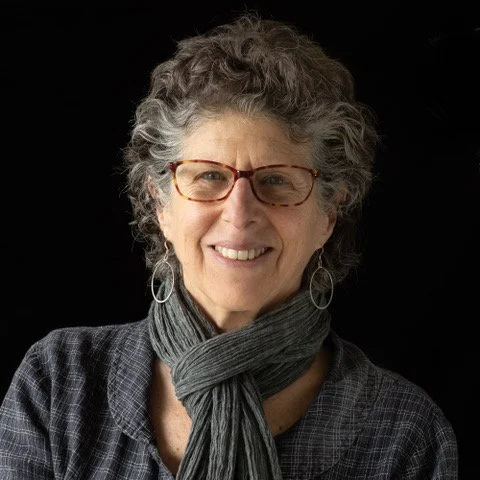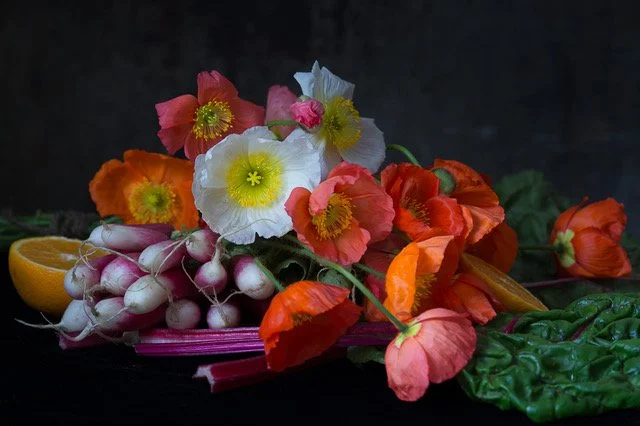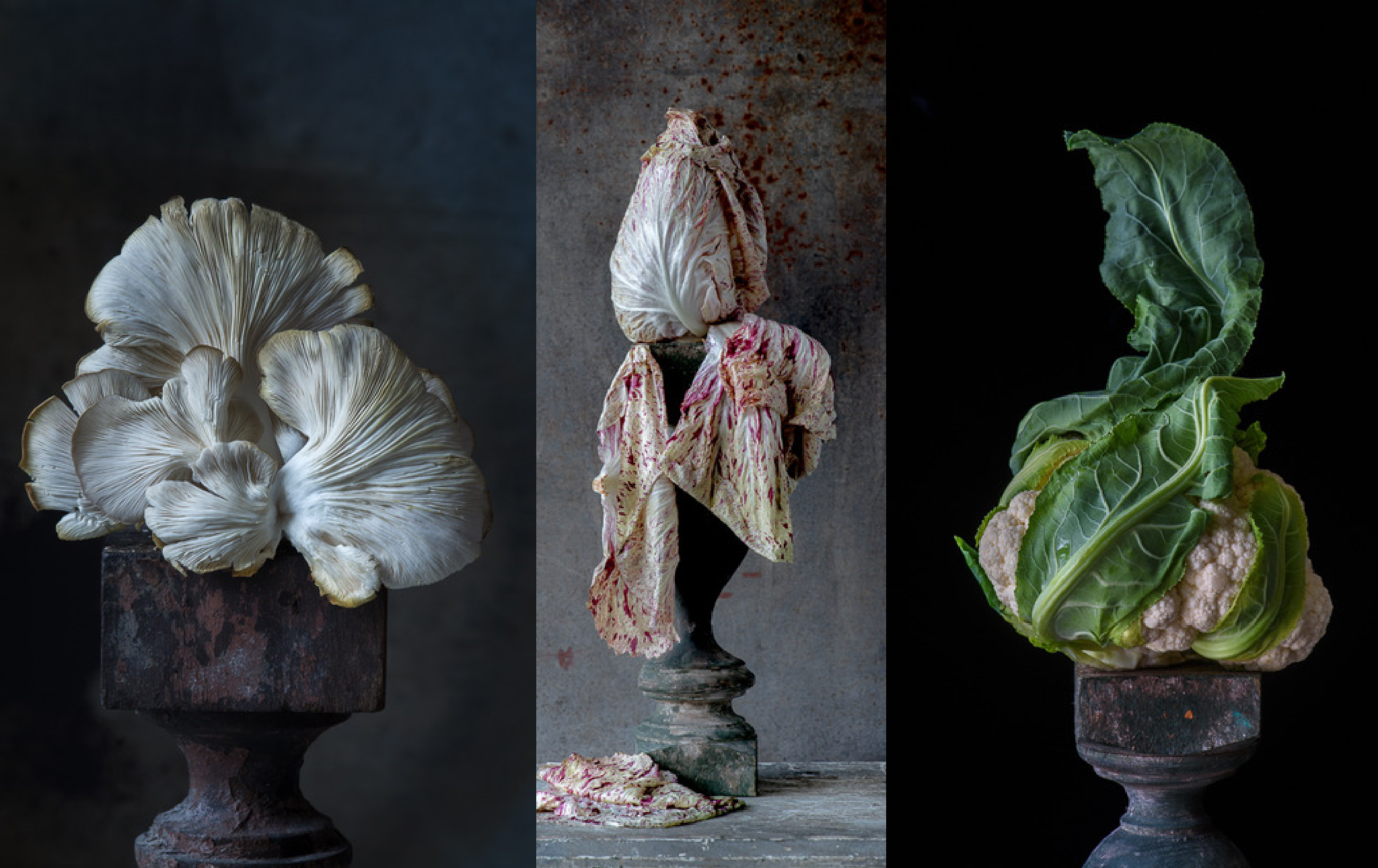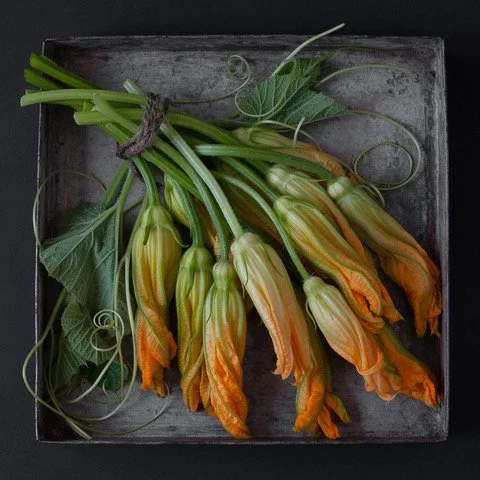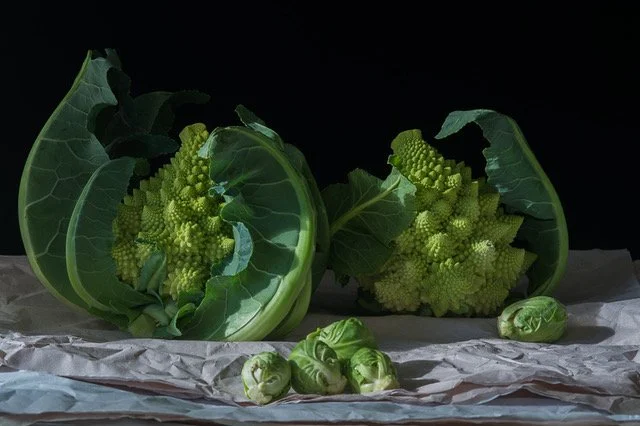Lynn Karlin
Bosc Pears
A still-life photographer of vegetables, fruit and flowers, Lynn Karlin lives on the coast of Maine and is passionate about local markets where everyone knows their farmer. A graduate of Pratt Institute in Brooklyn, New York, she has an impressive list of employees and clients over her five-decade career. Sole photographer of three award-winning garden/lifestyle books, Lynn's work has appeared in numerous write-ups from the San Francisco Chronicle to The New York Times and is exhibited in galleries and corporate headquarters worldwide.
Words &Photography by Lynn Karlin
For all its problems with overcrowding, my New York City high school had something special: a small but excellent progressive art and photography department. After graduating high school and before continuing my studies at Pratt Institute in Brooklyn, I would take my heavy portfolio around to magazines and book companies during the day. At night I was a waitress.
Still Life with Poppies and Radishes
Then, good fortune: I became the first woman staff photographer for Women’s Wear Daily, a trendy New York fashion tabloid. This gave me the confidence and skill to shoot everything from top models to celebrity portraits to upscale parties and elegant homes. But I wanted to live in the country, so after 13 years of freelancing as an editorial photographer, I left the fast-paced city life and moved to a remote farm on the rugged coast of Maine. Along with my late husband Stanley Joseph, whom I met in Maine, we raised vegetables and flowers for inns and restaurants in the area and co-authored a book about our farm: Maine Farm, A Year of Country Life. We celebrated each season, and I photographed our amazing harvests. This gave me a new appreciation and respect for fresh food and the enjoyment of eating with the seasons. After eight years I left farm life and I began two decades of photographing other gardens for national garden and lifestyle magazines.
In 2008, when the recession hit, many of the publications I worked for went out of business. I decided it was time to find my own voice. Inspired by the black-and-white photographs of Edward Weston, especially his Pepper No.30, I knew still-life was my calling. How could any image come close to the sensuousness and beauty that Weston depicted? I admire his simplicity of form and light, and his rich, dark backgrounds. Another B/W photographer, Charles Jones, from the early 20th century, was even more instrumental to my work. His passion was photographing vegetables as well as flowers and fruit that he grew. He used neutral backgrounds and repetitive patterns to document his harvest, in simple compositions. This prolific artist worked purely for his own pleasure and never exhibited in public. It was only after his death that his work was discovered in a box at a London antique market. A similar approach, but more architectural in design, can be seen in the wonderful images of plant life by photographer Karl Blossfeldt, who worked around the same time. My photography is a result of my admiration for and inspiration from these three photographers.
Italian Oyster Mushroom - Radicchio Gone By - Caulifower on Pedestal
My career as a fine-art photographer began quite unexpectedly, at a local farmer's market. I noticed an amazing large purple cauliflower intact with all its leaves and stems. I brought this beauty home not knowing how, exactly, I would photograph it. Walking around my house, looking for an idea, I spotted a white pedestal I had bought years before at a local shop. The early morning side light was seductive. Placing my new subject on the pedestal’s surface, I took my first photo in The Pedestal Series.
Squash Blossoms
The images in this collection often feature a single specimen isolated to retain the simplicity of the subject while highlighting the complexity of its sculptural form. These portraits capture the unique character of often overlooked plants and celebrate the beauty of the harvest. In our rapidly changing world, I realize now more than ever how much we need to put both the farmers and their produce on a pedestal if we want to sustain our valuable farmland and provide quality food for the table.
Still Life with Donut Peaches
I begin most days by going to a local farmers market, scouting for either one vegetable for a “portrait” or a group of vegetables to style into a still-life. My styling experience evolved through the years while working with professional stylists and editors when photographing homes and gardens for House Beautiful, Country Living and other interior-design publications. Back in my studio with my “finds” from the market, I select the appropriate backdrop. I have been collecting weathered boards, fabrics, rusty sheets of metal, wooden doors with great patinas, textured tiles and old pedestals for a long time.
Romanesco Cauliflower & Brussel Sprouts
I often try several arrangements. Occasionally one falls into place right away, which happened early in this series when I placed the squash blossoms in a tray. This has turned out to be one of my most successful images. Other still-lifes often take all day or even multiple days. In the case of Hot Summer Still Life, I wasn’t happy with the results. A couple of days later I looked at the tabletop which still had that set-up and found it far more interesting now that the vegetables had wilted and gone by. It illustrated the plants’ ephemeral nature, rejoicing in ageless beauty.
———————————————————————————
To find out more about Lynn visit www.lynnkarlinphoto.com or follow @lynn.karlin on Instagram
Patty Pan Squash - Purple Cauliflower - Garlic Scapes


